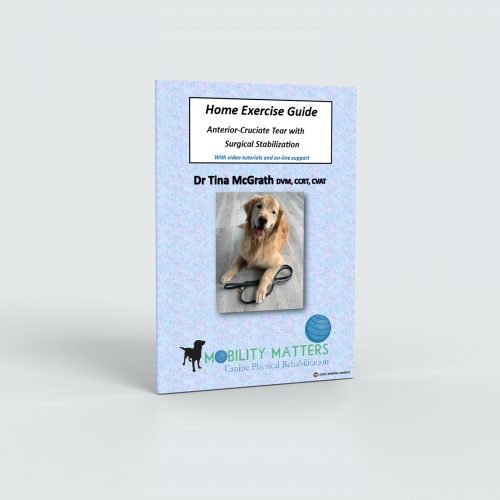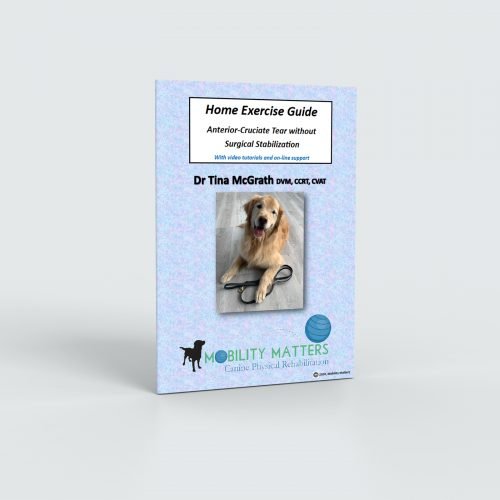This is often a complex question as there are many different presentations of a torn cruciate ligament. A veterinarian will use a test called a drawer sign to evaluate the degree of the movement in the joint as a method of determining if there is a partially torn ligament or a completely torn ligament. If you imagine the cruciate ligament as being made of 100 fibres (strings) and in some cases, all 100 are torn and now there is a lot of instability/excess movement in the joint.
If we are not pursuing surgery it is asking the body to create a significant amount of scar tissue/ fibrosis around the joint to create stability. The instability will contribute to long term arthritis, muscle wasting and pain as the cartilage is worn away. Dogs walk with their knees in a flexed position naturally and this bent-knee position will cause the tibia/shin bone to move forward without a cruciate ligament in place and this will create swelling, inflammation and pain. This scenario will be amplified in a large breed active dog. Surgery will often have the best results in the above example.
We also know that dogs with a torn cruciate can have a secondary tear of the cushion in the knee called the meniscus. A torn meniscus would be addressed at the time of surgery as the meniscal tear has no way of healing itself and also contributes to a poor outcome without surgery. The challenge is there is always a group of dogs who have only partially torn their cruciate ligament and the degree of instability is not as great. Imagine in this case that only 25 of the fibres are missing and the degree of instability is not as severe but another dog could have 75 fibres missing. These cases are often best discussed with your veterinarian.
There are some dogs that may not be candidates for surgery due to age, underlying conditions or cost concerns. Your veterinarian will evaluate the degree of instability, activity level and age of your pet. If there is a clicking sound in the knee it would increase the suspicion of a meniscal tear and surgery is often the better plan of action. A rehabilitation veterinarian can also be beneficial in answering this question as there is no one plan for all dogs. If surgery is not the route that your dog is pursuing our home exercise program that is supported by our rehabilitation facility is recommended. We would still want to maximize the mobility of your pet and the function of the limb.



